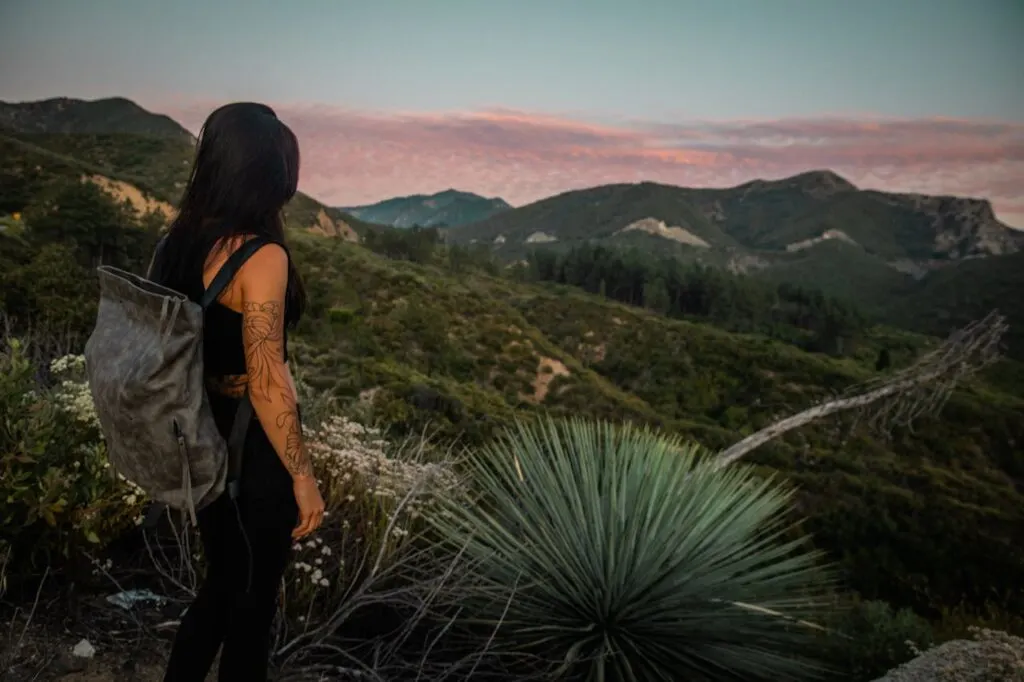This post may contain affiliate links. I only recommend products I use and love. Read the full disclosure here
Last Updated on January 10, 2025 by Alaina
Native vegetation plays a crucial role in maintaining the health and biodiversity of ecosystems. When landscapes transform—whether due to urban development, agriculture, or other human activities—natural habitats are often disrupted. This disruption can lead to a decline in local flora and fauna, as well as an increase in invasive species. Bringing native vegetation back is the key to reversing some of these negative impacts. By reintroducing endemic species, we can enhance ecological integrity and create more resilient landscapes that offer numerous benefits.

The Importance of Native Vegetation
Native vegetation serves as the backbone of healthy ecosystems. It provides habitat for wildlife, supports pollinators, and contributes to soil structure and health. Moreover, native plants are adapted to local climate conditions, making them more sustainable choices for landscaping. Their deep roots help with water retention and reduce soil erosion, which is increasingly vital in a world facing climate challenges.
Native plants can reduce the need for chemical fertilizers and pesticides, promoting a healthier environment. The biodiversity intrinsic to landscapes filled with native species is a significant asset. Studies have shown that areas rich in native vegetation can support higher levels of biodiversity, which is fundamental for ecosystem resilience. As we continue to witness climate change and habitat loss, the need for a diverse plant community becomes even more pressing.
Land Transformation Services
Land transformation services involve assessing and implementing strategies to rehabilitate landscapes that have been altered or degraded. The team behind the website of mountaineerlandsolutions.com says that effective restoration relies on knowledgeable practitioners who understand local ecosystems and their specific needs. These services encompass a range of activities, including invasive species management, soil remediation, and the introduction of native plant species.
The goal is to return landscapes to a state that embraces their original ecological character. Within these services, the assessment phase is crucial. Experts use various tools to evaluate the ecological condition of the transformed landscape, including soil composition, water availability, and existing flora and fauna.
This analysis informs the selection of appropriate native species that can thrive within the rehabilitated environment. An effective transplanting strategy considers seasonal variations, ensuring that plants have the highest chance of survival post-implementation. Land transformation services can help mitigate the impacts of urban sprawl. As cities expand, pockets of natural landscapes are often lost.
Challenges in Restoring Native Vegetation
Restoration of native vegetation faces several challenges, particularly in areas significantly altered by human activity. One notable issue is the presence of invasive plant species. These plants can outcompete native flora, leading to a decline in biodiversity and altering habitat structures. Effective management of invasives is a fundamental aspect of successful restoration efforts. Removing invasives often requires ongoing monitoring and physical intervention, which demands significant resources and time.
Another challenge lies in public awareness and engagement. Many communities may not understand the benefits of native vegetation or the ecological importance of restoration efforts. Building awareness through educational programs is vital to garner community support and participation. Involving residents in restoration initiatives fosters a sense of stewardship and responsibility towards their environment.
Finally, funding and resources can be limited, especially for large-scale projects. Restoration projects often rely on a mix of public and private funding. Engaging stakeholders, such as government agencies and non-profit organizations, can alleviate some of this burden and provide essential financial support to restoration efforts.
Successful Case Studies
Several successful case studies illustrate the effectiveness of restoring native vegetation to transformed landscapes. In Australia, large-scale restoration projects involving the reintroduction of native plant species have seen significant success in enhancing biodiversity and mitigating erosion. Programs that offer incentives for landowners to maintain native vegetation have led to positive ecological outcomes, providing models that other regions might emulate.
In the United States, the restoration of wetlands has become a priority, bringing back native flora and fauna. The National Oceanic and Atmospheric Administration reports substantial recoveries in local wildlife populations when native vegetation is restored in freshwater and saltwater environments. Many regions that underwent extensive land use changes are now seeing the benefits of comprehensive restoration practices, recapturing biodiversity and ecosystem functions.
Community Involvement and Education
Community involvement is crucial for the success of restoration projects. Educating residents about the importance of native plants fosters public support and encourages volunteer participation. Workshops, guided nature walks, and school programs are effective ways to promote awareness.
Engagement can take various forms, from local volunteer days, where community members come together to plant native species, to long-term stewardship agreements that empower locals to take conservation efforts into their own hands. Establishing native plant nurseries also promotes community involvement, providing resources and educating the public on the benefits of local flora.
Policy and Funding for Restoration Initiatives
Effective policy frameworks and funding mechanisms are essential to support restoration initiatives. Government policies that prioritize habitat restoration can cascade down to regional and local efforts. Supporting financial mechanisms, like grants for restoration projects, can drive interest and motivate landowners to participate. Establishing partnerships between governmental agencies, non-profits, and private organizations can result in successful restoration outcomes.
These collaborations can leverage additional funds and resources, as well as create more comprehensive and sustainable restoration plans that benefit multiple stakeholders. The integration of restoration objectives into broader planning initiatives also ensures that the health of landscapes remains a priority in the face of continued urbanization and development.
The Future of Native Vegetation Restoration
Looking ahead, the future of native vegetation restoration is promising but laden with challenges. Emerging technologies in ecology, including remote sensing and geographical information systems (GIS), offer innovative solutions for restoration planning and monitoring. These technologies enhance data collection processes, enabling scientists and forest managers to analyze landscapes more effectively.
As global awareness of climate change increases, so too does the recognition of the benefits offered by native vegetation. With advocacy and cooperation among ecological professionals, community members, and policymakers, the movement to restore native plants has the potential to thrive. Striking a balance between economic development and ecological preservation will become increasingly vital. Moreover, ongoing research into the best restoration practices will refine and improve strategies, making restoration efforts not just achievable but successful over time.
Restoring native vegetation to transformed landscapes presents both a challenge and an opportunity. While faced with numerous obstacles, such as invasive species and resource limitations, the benefits far outweigh the hurdles. Collaboration among community members, restoration specialists, and policymakers can pave the way for the successful integration of native plants into transformed environments.
Each step toward restoration enhances ecological health and preserves our natural heritage for future generations. Elevating awareness and encouraging community involvement will ensure that native vegetation restoration remains a priority in landscapes affected by human activities.
